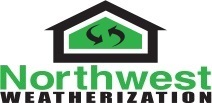Well-insulated walls are an important part of an energy-efficient home.
We use JM Spider as our preferred blow-in wall Insulation. JM Spider is a fiberglass JM Spider® Loose-fill fiberglass insulation. This insulation is for drill-and-fill jobs. We use it because it has smaller fibers to fill tight spaces around pipes, wires, electrical boxes and other cavities. This maximizes the R-value or resistance to heat transfer. JM Spider insulation offers many big advantages over cellulose in drill-and-fill applications. We use this type of wall insulation because it offers superior thermal and sound deadening. We also use it because it meets the new Building Performance Institute standard for dense-pack wall applications.

Benefits of JM Spider:
- Up to 25% greater R-value than dense-packed cellulose.
- Up to 30% better airflow restraint than cellulose.
- Far more cost-effective than foam.
- Does not promote mold or mildew growth.
- Primarily composed of sand, a rapidly renewable resource.
- Contains at least 25% recycled glass.
- Won’t settle.
- Non Corrosive.
- Non Combustible.
- Formaldehyde free.
Reduces Fire Risk
Properly installed wall insulation can help reduce the risk of fires in your home. Our fiberglass insulation is non combustible and chemical free.
Energy Savings
A properly insulated wall cavity can help lower your energy bills. Almost 35% of the energy in your home is lost through the walls if they are un-insulated.
Increases Home Comfort
Increase the perceived comfort of your home. With wall insulation your home will heat more evenly. It will also maintain its temperature at a consistent level for longer.
WALL INSULATION
Up to 35 percent of your home’s heat loss is through the exterior walls. Northwest Weatherization specializes in retrofitting, under or non insulated walls. Below is a step by step guide on how we retrofit existing walls.
Checking for insulation
A Northwest Weatherization auditor will examine your walls to ensure you have proper wall insulation using:
Thermal infrared cameras
Using an infrared camera, the sources of air leaks can be visually located and same with areas where wall insulation is missing or under insulated.
Visual inspection
Probing around electrical outlets we conduct a visual inspect the wall cavity to check insulation (Do not attempt at home) Boroscope – Visual inspection with a rigid or flexible tube with an eyepiece on one end, an objective lens on the other.
METHODS OF INSTALLATION
If there are any problems then our crew will insulate the wall cavities with fiberglass from the outside or the inside.
From the Exterior of the home
- Remove siding. (In some cases removal isn’t possible. We drill directly through the siding or drill from interior).
- Drill a 2-3 inch hole in sub-sheathing.
- Insert tube and fill cavity.
- Insert wood plug and seal plug.
From the Interior
- Drill through dry wall.
- Fill cavity.
- Insert foam plug and patch.
TYPES OF WALL INSULATION
Cellulose insulation is plant fiber used in wall and roof cavities to insulate. Extra benefits includes a decrease in indoor moisture and noise reduction. Cellulose is among the oldest types of building insulation material.
Spray foam is a two-component mixture composed of isocyanate and polyol resin comes together at the tip of a gun, and forms an expanding foam that is into the wall cavity.
Fiberglass insulation is made up of millions of tiny glass fibers. The tiny air spaces between them help to slow down the transfer of heat.
JM Spider is a fiber glass JM Spider® Loose-fill fiber glass insulation for drill-and-fill offers smaller fibers to fill tight spaces around pipes, wires, electrical boxes and other cavities to maximize thermal performance. To check out some of the energy trust incentives for walls.
Give us a call today or send in an audit request (check the right- “Schedule an Audit Today”), and we can come check out your attic insulation and any other energy efficiency concerns you may have at no cost. You might be surprised at what you qualify for.
